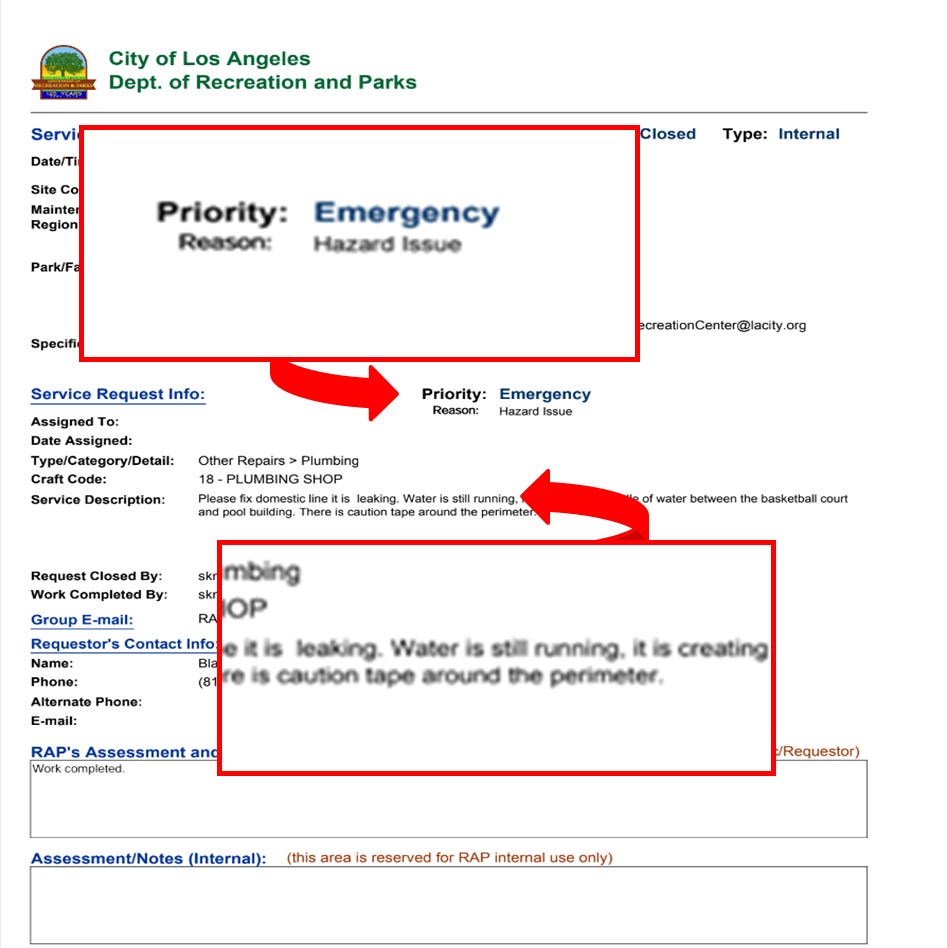"Ouch" by Daniel Guss
The Painful, Costly Consequence of City Hall's Gross Negligence
For months, and for at least a while longer, I have struggled like James Caan did in the thriller Misery.
His character, coincidentally a writer, survived a near-deadly car accident, only to be further incapacitated by the torture later inflicted upon him when he enraged his obsessed number one fan.
In my case, I suffered a gruesome injury in a negligently maintained LA park, and wound up on a Westside operating table for a brutally painful bone fusion surgery.
My surgeons used a saw, a drill, pins and a bright green plate that they screwed into my bones, causing me to lose a joint. You can watch some of the surgery, but I strongly discourage you, as the videos are extremely graphic and unlikely to be forgotten.
The pain from this surgery was unlike any I had previously experienced.
If the solar system measured pain, this was Jupiter; huge, intensive and unrelenting. Existing on one leg for months made it exponentially worse. This all-encompassing nightmare has been humbling and hazardous.
Just imagine all of the risks in a bathroom or the dozens of pivots on a scooter that are needed just to get from here to there, and throughout each day. To prevent the severe swelling from harming the bone fusion and plate, I was tightly wrapped in bandages below the knee, like a living tube of squeezed toothpaste. Some pain, I quickly realized, is beyond the reach of painkillers.
There were the aches and pains from compensating for the physical imbalance. I fell twice, triggering other injuries. I missed Mother’s Day and everything else, literally only leaving home for follow-ups with the surgeons. I had to rely on others for everything.
Recently, the surgeons okayed my gently putting some weight on my injured paw and cautiously reacquainting with walking. But now, the tradeoff for some regained mobility in a protective boot is the stinging, stabbing wrath of regenerating nerves.
But if you read this column on a regular basis, you know that there is much more to it than just an injury.
While preparing for my surgery, my ears perked-up when I heard LA City Council president Paul Krekorian speak during one of its fawning presentations that delay and disrupt its meetings on most days.
The honoree in one of its presentations was a retiring Assistant General Manager in the Department of Recreation and Parks, which includes the park where I was injured.
Roll the video:
In case you missed it, Krekorian, who joined City Council in 2010, and chaired its Budget and Finance Committee for much of his tenure, acknowledges in this clip the years if not decades of underfunding of Rec and Parks prior to my accident, with the attendees nodding in agreement, that doing so meant shoddy maintenance was done with grossly negligent materials and workmanship:
“The Department of Recreation and Parks has been there for the people of this city. And the men and women of this department get up and go to work every day with a department that is underfunded, has been, since, as long as I have been here. We went through the Great Recession together. We went through COVID and the post-COVID budget collapse that happened there. And the men and women of this department, under your leadership and the leadership of the rest of the team at Recreation and Parks, has not only kept things together, sometimes with duct tape and baling wire....but you made it happen."
Los Angeles City Council president Paul Krekorian, March 19, 2024
In legal circles, negligence is proven when four elements are demonstrated:
DUTY - Did the City have a duty to provide a properly maintained park? (✅)
BREACH - Did the City breach that duty? (✅)
CAUSATION - Did the City’s breach cause the injury? (✅)
DAMAGES - Did the City’s causation result in damages? (✅)
But negligence can become gross negligence if other conditions are proven, like would shoddy maintenance and substandard materials foreseeably increase danger to the public? (✅)
That’s going to be a problem for the city.
So is hiding public records.
When I submitted a public records request for the hazard that caused my injury, the city provided just a single piece of paper listing it as an “emergency,” and that “water is still running.”
Note the word “still.”
If the person who wrote this one-page document said at the time that water is “still” running, it had to be based on some earlier documentation that the city has refused to turn over, like the original maintenance request and all efforts to fix it prior to this document and subsequent to my accident.
What happened with this emergency hazard previously and since?
Who worked on it, when and how many times?
Worse, the city also claims that it has no records regarding the hazard eventually being filled with dirt and ordering the tree that had towered over it removed, as if to pretend it never existed.
Except it is already documented in this column.
Where’s that work order and the communications that led to it?
Yeah, that’s going to be a problem for the city.
(Daniel Guss, MBA, is a multi-award-winning journalist. In June ‘23, he won the LA Press Club’s “Online Journalist of the Year” and “Best Activism Journalism” awards. He has been City Editor for the Mayor Sam network, and a featured contributor for CityWatchLA, KFI AM-640, iHeartMedia, 790-KABC, Cumulus Media, KCRW 89.9 FM, KRLA 870 AM, Huffington Post, Los Angeles Daily News, Los Angeles Magazine, Movieline Magazine, Emmy Magazine, Los Angeles Business Journal, Pasadena Star-News, Los Angeles Downtown News and the Los Angeles Times in its sports, opinion, entertainment and Sunday Magazine sections among other publishers.)



